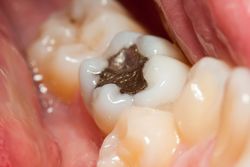Dental health is a crucial part of your overall health, and it can have a great impact on the progress of recovery. Due to a lot of people having amalgam fillings, we want to discuss with you how they can have a great impact on your overall health in a negative way and how and when to remove them in the safest way possible.
What Are Amalgam Fillings?
In the dental industry, amalgam fillings are used to help fill in the cavities caused by tooth decay and restore teeth to their original size and shape.
“Amalgam” is a generic term applied to the silver-mercury filling, which is most commonly used in traditional dentistry. The term literally translates to “mixed with mercury.” Furthermore, these fillings are usually composed of about 50% mercury and the other 50% are other metals — namely silver, tin and copper.
Why Are Amalgam Fillings Used?

Amalgam fillings were used for years and were primarily introduced to the dental health industry as an affordable and long-lasting solution to cavities. They were first introduced before anyone knew that dental cavities could be prevented through proper nutrition.
What Are the Health Effects of Amalgams?
Mercury is a binding agent that creates a strong, durable and solid filling; however, it’s also a highly toxic compound. The mercury in amalgam fillings can be absorbed into the body through the tongue and the insides of your cheeks.
Once absorbed, mercury has the potential to destroy adjacent tissues, travel to the lymphatic system and can be directly deposited into the bloodstream. Once it’s in your bloodstream, it can travel throughout the entire body, where it can disrupt any and all cells it encounters.
Mercury inhabits and disables body cells by traveling through the cell’s lipid soluble membranes, which every cell is known to have. Thus, mercury can attach itself to just about any cell in the body, rendering it abnormal. The affected cell is, in turn, subject to destruction courtesy of the immune system. Often, this situation can lead to autoimmune disorders.
There are a number of health complications and disorders found to be related to mercury exposure. These include lupus, Alzheimer’s, ALS, diabetes and seizures. Furthermore, mercury is associated with causing damage to both kidneys and to the central nervous system.
Removing Amalgams: The Process
Removing amalgam fillings can be a challenge, mainly because removal can possibly result in mercury ingestion. Thus, it’s crucial that one finds a holistic dentist who’s familiar with amalgam filling removal for the procedure to be successful.
During the procedure, both the patient and the dentist are carefully protected from exposure by covering their face and other exposed parts with a cloth. Dentists will also place a rubber dam in the mouth to help prevent debris from entering the throat, and then gives the patient an outside air source to prevent breathing in mercury vapors.
Then, the dentist will use the “cut and chunk” method to help eliminate amalgam in large chunks, which lowers mercury exposure. Furthermore, during the removal, the area is suctioned with a high-volume evacuation tool to help remove amalgam leftovers, followed by a rinse to help clean the saliva.





